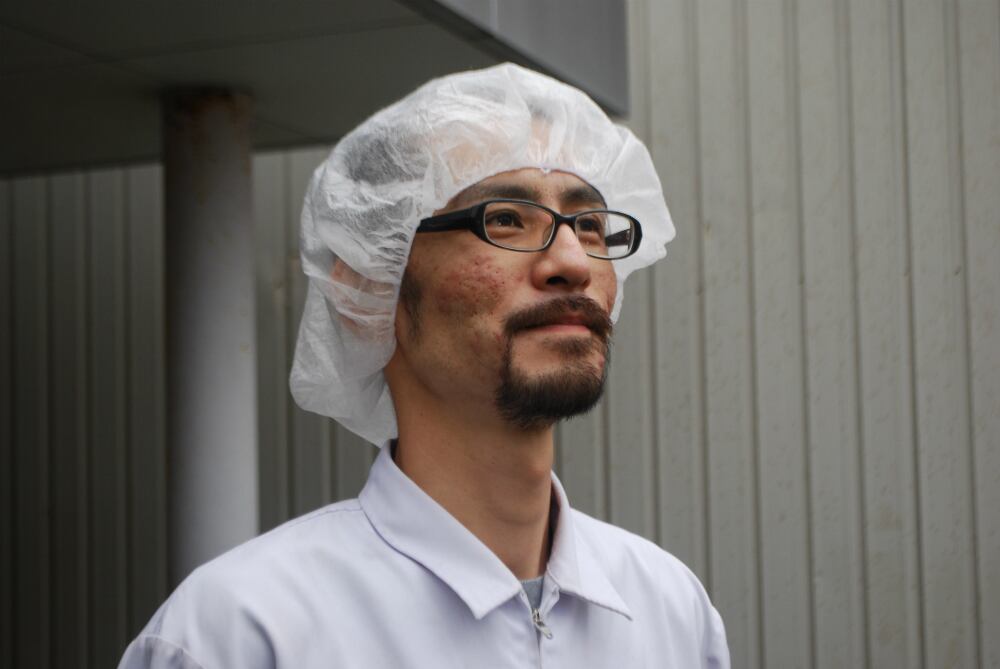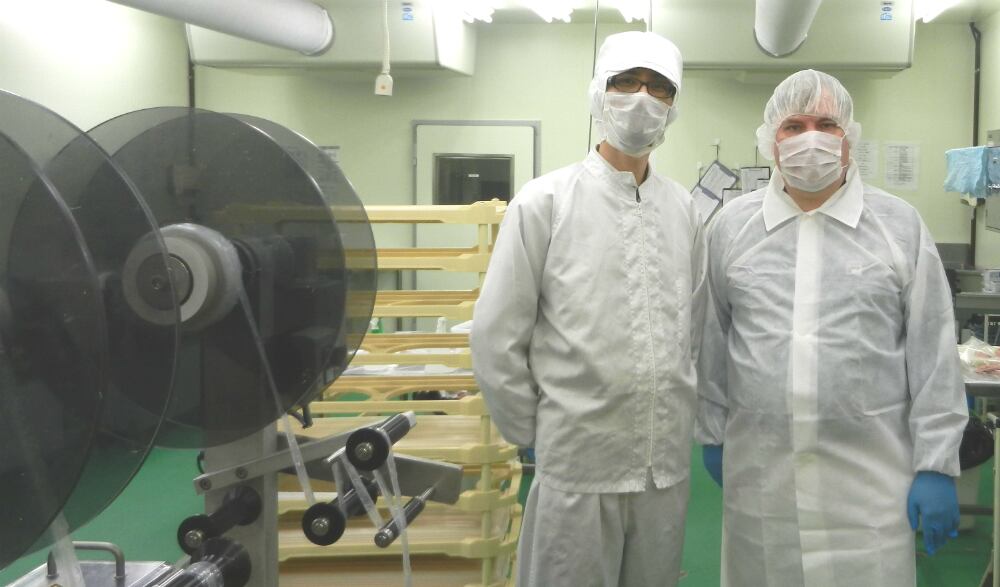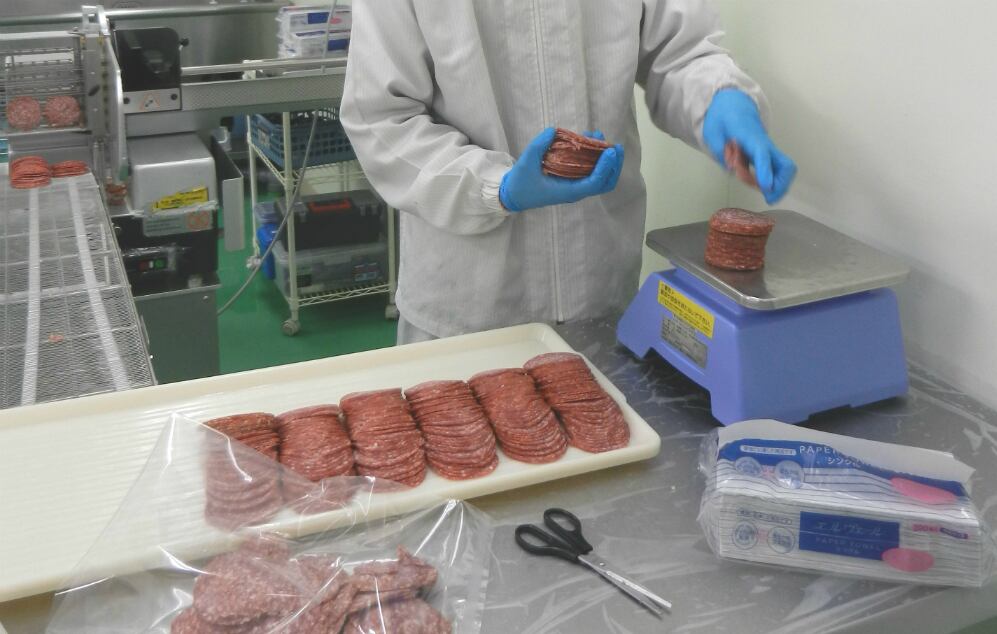Westerners are as rare as hen’s teeth in the Japanese countryside. But to see a western butcher in such parts is even rarer – maybe unprecedented. Hull-born butcher Anderson is standing outside a meat processing plant in Sasayama, a small town some 30 miles northwest of Osaka, Japan’s third metropolis. His authentic British sausages, as well as pork pies, bacon, and pasties, are prepared here, before being distributed across the country to the catering sector.
Anderson trades under the name Bangers N’ Mash. On the day GlobalMeatNews visits him, he is traversing the countryside in his Mini Clubman, which is adorned with his company livery. The car is vital for his commutes: he also grows crops, runs a British-style pub, and operates an English language school in Osaka. He approached Japanese firm Sasayama Ham in 2010, suggesting that he make authentic British meat products at their rural facility. Anderson conducts a tour of the factory, along with Yoshiya Shimane, factory manager, and sub-factory manager Naoya Dogahira.

A deal was struck, whereby Anderson pays Sasayama Ham for the use of its staff and facilities (although he has invested substantially in some of his own equipment). He also pays a slight mark-up on Sasayama Ham’s meat, which he uses in his lines. Anderson’s products are subject to a host of different rules and regulations, different to those in the UK. “The main difference is the preservatives,” says Anderson. “You can use the same preservatives as in the UK, but when you use a preservative in a sausage in Japan, the finished product has to be pasteurised. It has to be heat-treated at a set temperature.”
Ready and labeled
The devil, though, is in the detail. Anderson chooses not to use preservatives in his sausages, because he had difficulty sourcing exactly what he wanted. This means that they must be frozen once made, transported frozen, and kept frozen by the customer. Humidity in Japan, which is extreme in the summer months, has led to a highly efficient chilled and frozen road transport industry, he says.
“The labelling content is the same as the UK; the standard things like weight, expiry date, and a basic list of ingredients,” explains Anderson. The Sasayama factory, he points out, caters to both retailers and wholesalers. This means that, for the wholesale products, labelling printed at the factory should state the name of the wholesaler. At the same time, Sasayama Ham must inform the Japanese government who exactly they are making their food for. Meanwhile, if the products are destined for the catering sector, labels must display the name of Sasayama Ham or Bangers N’ Mash.

Anderson buys his spices from a Japanese importer, which blends the products to his request. “I originally tried to get UK spices, but they were rejected by the Japanese government because their dioxide levels were too high. So, I sourced them locally, with no preservatives in them,” he states. Imported machinery, such as his sausage stuffer, which can handle a 100kg load, is prohibitively expensive to ship to Japan, approaching the cost of the item itself. That said, utilities, insurance and labour costs are less than in Britain. Most of his equipment is German.
Quintessentially British
In Japan, it is vital, Anderson says, to nurture a close contact with business partners, before production begins. Entertainment in the form of meals is a common way of building up trust. To cross the language hurdle, in the early days with Sasayama Ham, he paid for an interpreter. Now, he says that he has picked up enough of the language to maintain current operations. “We don’t have a problem with communication,” he says.
Talking of the major differences between his operation and one in the UK, Anderson points to language – the Japanese have three alphabets, one of which consists of over 2,000 characters, indecipherable to the western eye. On top of that are the complications in Japan in securing the licensed premises in which to prepare such food, and the challenges in securing the relevant visa. He had to show the Japanese authorities that he had 10 years’ butchering experience under his belt in the UK.

Firms like Bangers N’ Mash can make it in Japan, if they are prepared to do their homework, adapt to cultural challenges, and have a long-term strategic plan. UK spice companies, he says, could also thrive, but to do so they would need an agent and an office in Japan.
The factory includes a state-of-the art meat import facility. Some 90% of pork consumed in Japan is imported, owing to high domestic pig farming costs. But the Bangers N’ Mash boss doesn’t think foreign when he makes his products. He refuses to change them to cater for Japanese tastes. He says: “The Japanese are very famous for taking another country’s products and making it ‘Japanese’. But I refuse to do this. I keep it British-style.”
